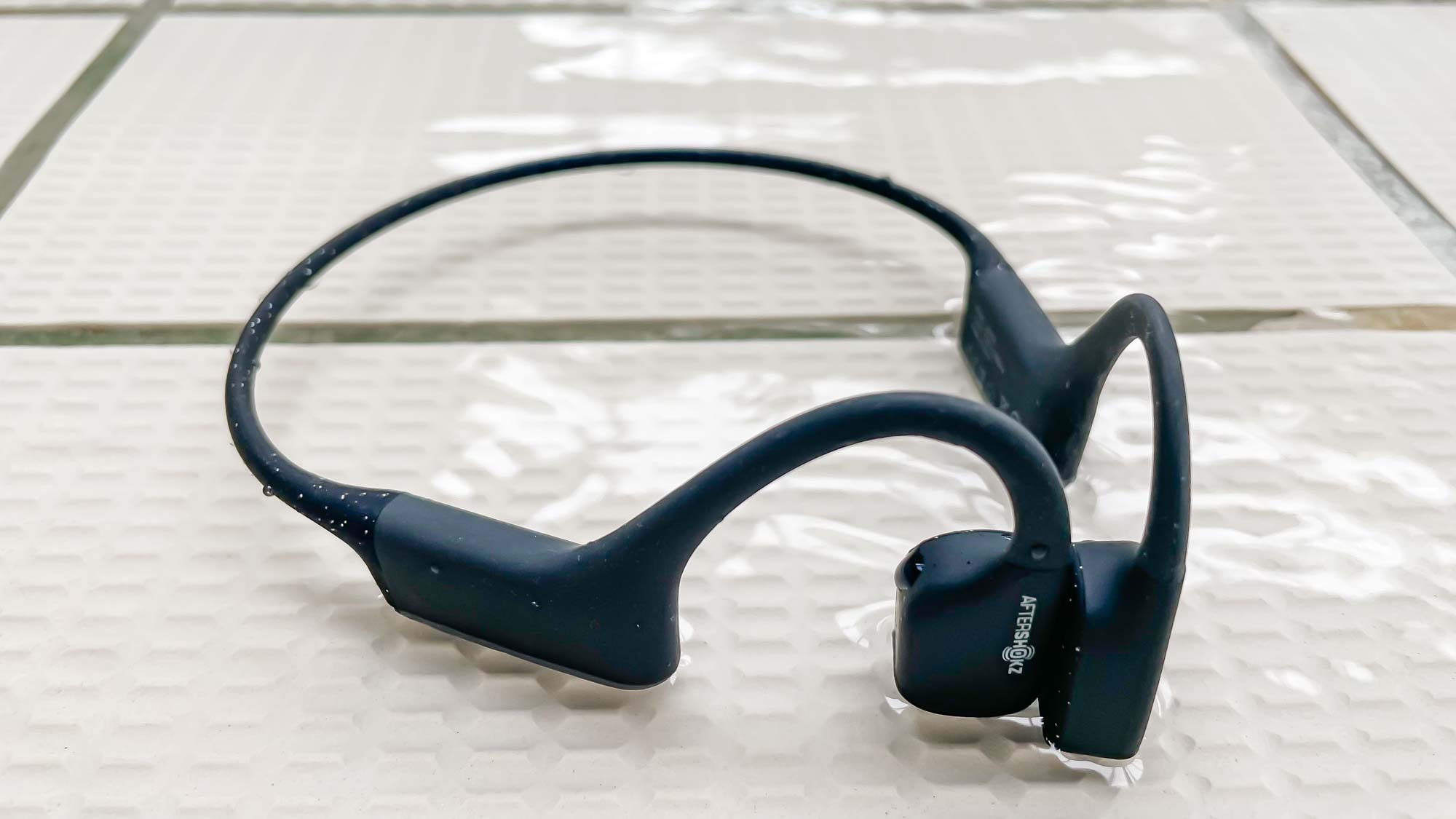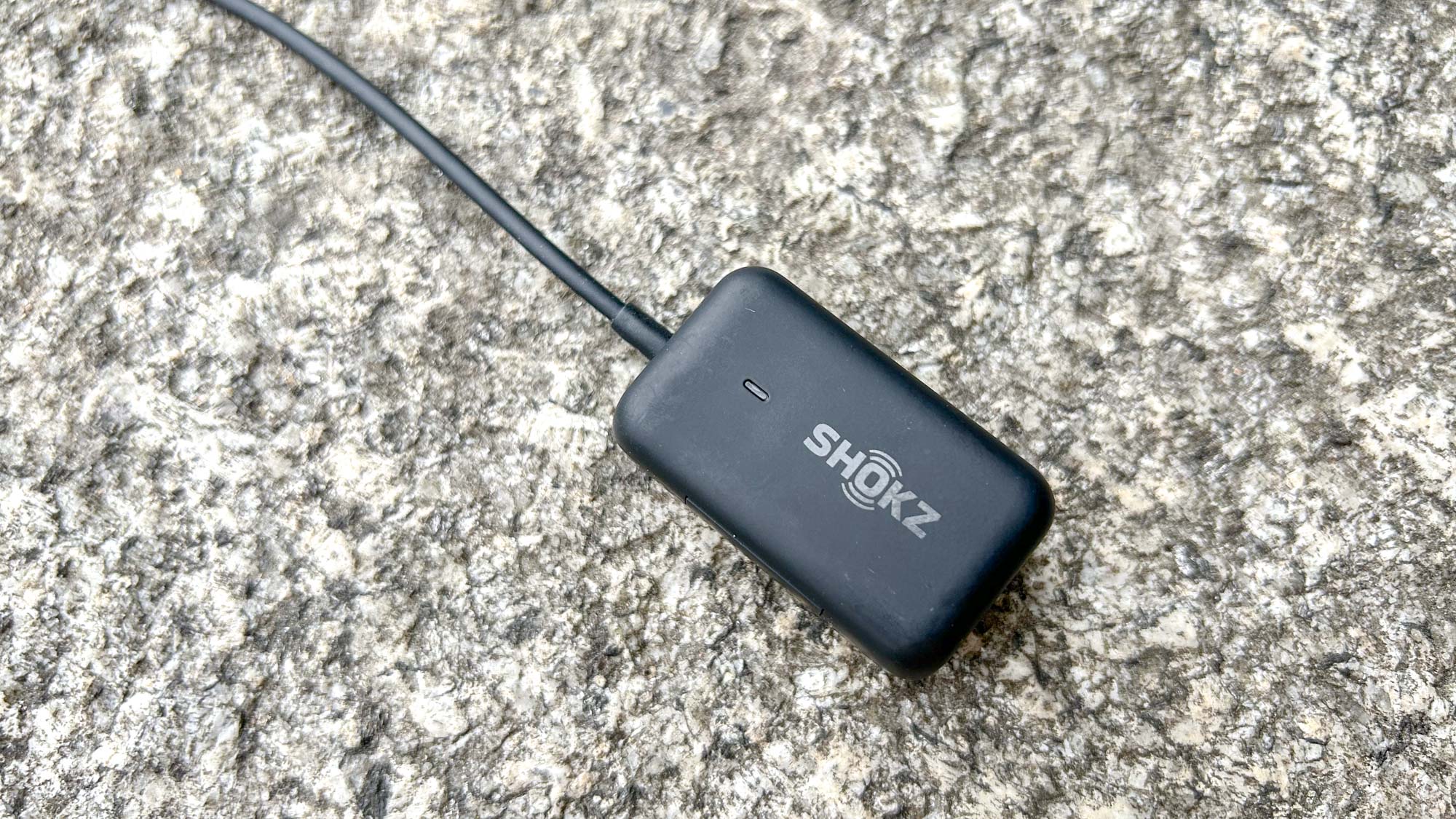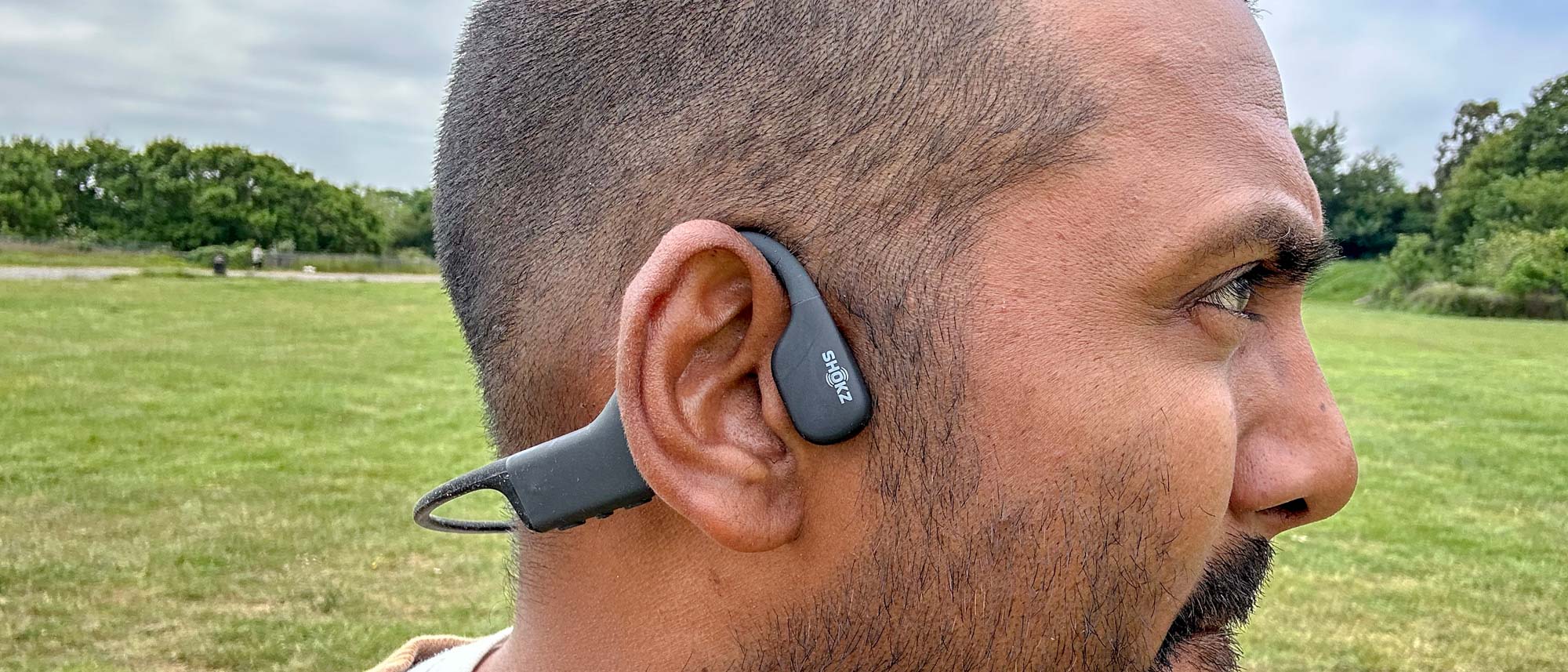Tom's Guide Verdict
The Shokz OpenSwim are a great set of headphones to take swimming, delivering enjoyable sound in the water. They're a good fit for exercise out of it, too, but the lack of Bluetooth connectivity for use outside of the water seems an oversight at the price.
Pros
- +
Slim and lightweight design
- +
Clear, enjoyable sound in the water
- +
Straightforward to store music
Cons
- -
No Bluetooth connectivity
- -
Battery prompts inaccurate
- -
High price compared to rival bone conduction models
Why you can trust Tom's Guide
Price: $149 / £169 / AU$239
Colors: Black, blue
Battery life (rated): 8 hours
Connectivity: N/A
Storage: 4GB
Durability: IP68 waterproof
Weight: 1.05 ounces
The Shokz OpenSwim are bone conduction headphones primarily designed for swimmers who want to zone out and listen to music, podcasts and audiobooks while going for a dip and getting some laps in.
Taking the bone conduction approach means Shokz can deliver sound in a way that doesn’t block your ears, enabling you to stay aware of your surroundings with an open design that doesn't get inserted or sit over the top of your ears.
Often, bone conduction headphones compromise on audio quality, but just as we found with the Shokz OpenRun and Shokz OpenRun Pro models, the Shokz OpemSwim offer good sound both in and out of the water.
Crucially though, you only get that sound by transferring audio files to the built-in music player, and unlike other Shokz models we've tested, the OpenSwim lacks Bluetooth connectivity to enable wireless streaming from a paired phone or other device.
Read on for our Shokz OpenSwim review and why it’s one of the best bone conduction headphones and best waterproof headphones for swimming, with some small caveats.

Shokz OpenSwim review: Price and availability
The Shokz OpenSwim sit at the pricier end of the bone conduction headphone spectrum. They cost $149 / £169 / AU$239, which is quite pricey even for a pair of the best waterproof headphones for swimming, and puts them slightly less than a pair of 3rd generation AirPods.
The OpenSwim are available in black and blue colors and can sometimes be found discounted for less. Make sure you bookmark the best headphone deals to keep up-to-date on all the latest bargains.
Get instant access to breaking news, the hottest reviews, great deals and helpful tips.

Shokz OpenSwim review: Design and comfort
The OpenSwim stick largely to the same design used on the XTrainerz, the swimming headphones that were effectively replaced by the OpenSwim when AfterShokz rebranded to Shokz in 2021.
They also don’t shy too far away from the designs of the OpenRun and OpenRun Pro headphones, with a slender wraparound titanium frame, which has a speckled finish on the thinner section to mark them out from their non-waterproof headphone siblings.
They weigh just 1.05 ounces (around 30g) and that slender frame is welcomed if you choose to wear them with a swim cap as they slip effortlessly under it when using them in the water.
Shokz places three physical buttons on the underside of the right side of the headphones to turn on the headphones and adjust volume with another one Shokz calls the Mode button that discreetly sits just above that trio reserved for switching between supported EQ modes and taking better control of music playback. All of the buttons are nicely distinguishable, making them ideal for using them when you bob your head up above the water.
Unlike other Shokz headphones, the Swim are rated to IP68 water resistance, which makes them suitable to use in water as long as you’re not submerging them greater than 1.5 meters depth for more than 30 minutes.

Shokz OpenSwim review: Sound quality

Just to reiterate, the OpenSwim are open-ear MP3 swimming headphones. There is no Bluetooth connectivity, so you can’t pair them to other devices for streaming, handling calls, or summoning your smart assistant like you can with other Shokz headphones.
What you have instead is a built-in music player offering 4GB of storage and the ability to transfer over MP3, WAV, WMA, AAC files and you do that using the same proprietary cable used to charge the headphones. Drag and drop doesn’t feel like the most sophisticated way to do things in this modern age, but it is at least a pretty swift affair to sync and transfer files. You can place audio in folders and select folders to play from via the headphone controls albeit in a slightly fiddly manner.

Then from the headphones you can use the mode button to play audio normally, repeat a file or put playback into shuffle mode. You can also use that Mode button to toggle between two EQ modes. The first is a general mode, which promises balanced listening for playing music. There’s also a swimming mode to deliver audio in the water.
The marked difference between these two modes is that the general mode gives audio a much warmer, more well-rounded feel when listening to music, while the swimming mode seems to hollow things out but shifts the focus on generating better clarity and power. Ultimately, I found that using the headphones in general mode delivered the best results in the water and out of it.
Playing back files I'd downloaded and a bunch of podcasts with a mix of music and podcast chatter while introducing the earbuds into the water didn’t muddy the sound. They handled bass-heavy sounds well with an enjoyable amount of thump. A Swimming mode offered a boost for voice-based podcasts where the bump in volume and clarity felt most noticeable. The General mode was versatile enough to work for different types of audio both in and out of the water.

Shokz OpenSwim review: Battery life
Headphones with built-in music players generally see a bigger hit in the battery department because it takes a lot more work to power playback of the stored files than receiving a wireless audio stream from an external playback device.
Shokz says the OpenSwim should get you 8 hours from a single charge and that it takes 2 hours to fully top up form empty. There’s no fast charging option here like we've seen on some other Shokz headphones. If you’re listening at top volume, I would say that 8 hours is optimistic and based on my tests users should expect to get between 5 and 6 hours.
When you need to charge them up, it’s not your standard-look charging cable here either. The Shokz OpenSwim require you to clip one side of the headphones into a small box built that's on the end of the charging cable. This is not a cable you want to misplace.
Shokz OpenSwim reveiw: Verdict
The Shokz OpenSwim perform well when used for swimming and sound good in drier conditions as well. The design is nice and light making them ideal for long-term wear and they have good but not class-leading battery life. The big omission here is that lack of Bluetooth connectivity for wireless streaming, which hurts their use away from that swimming time.
In spite of some compromises, the Shokz OpenSwim deliver more than respectable sound. If you like the idea of headphones that are slim and light and let you carry music with you, then they're a great option and versatile enough to have on whether you're simply walking around, going for a run, or want something that's reliably waterproof for a swim.
More from Tom's Guide

Michael is a freelance journalist who has covered consumer technology for over a decade and specializes in wearable and fitness tech. Previously editor of Wareable, he also co-ran the features and reviews sections of T3, and has a long list of bylines in the world of consumer tech sites.
With a focus on fitness trackers, headphones, running wearables, phones, and tablet, he has written for numerous publications including Wired UK, GQ, Men's Fitness, BBC Science Focus, Metro and Stuff, and has appeared on the BBC Travel Show. Michael is a keen swimmer, a runner with a number of marathons under his belt, and is also the co-founder of YouTube channel The Run Testers.

